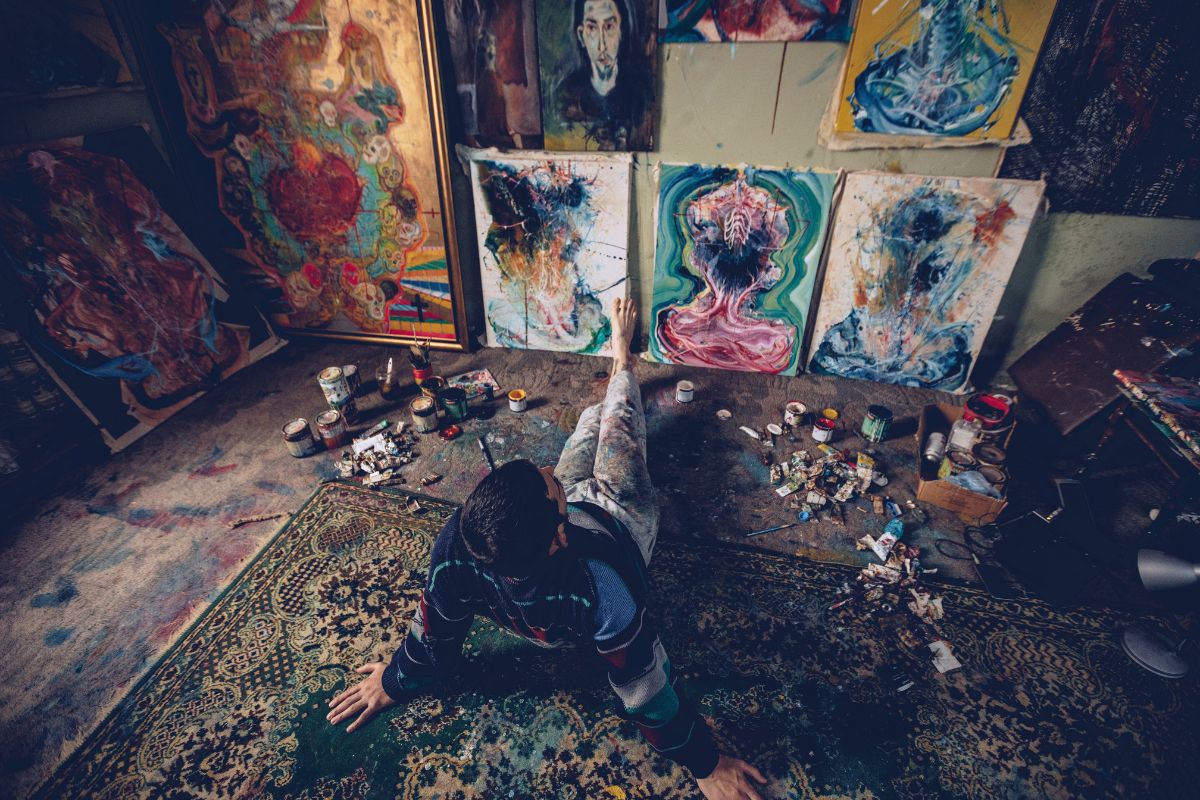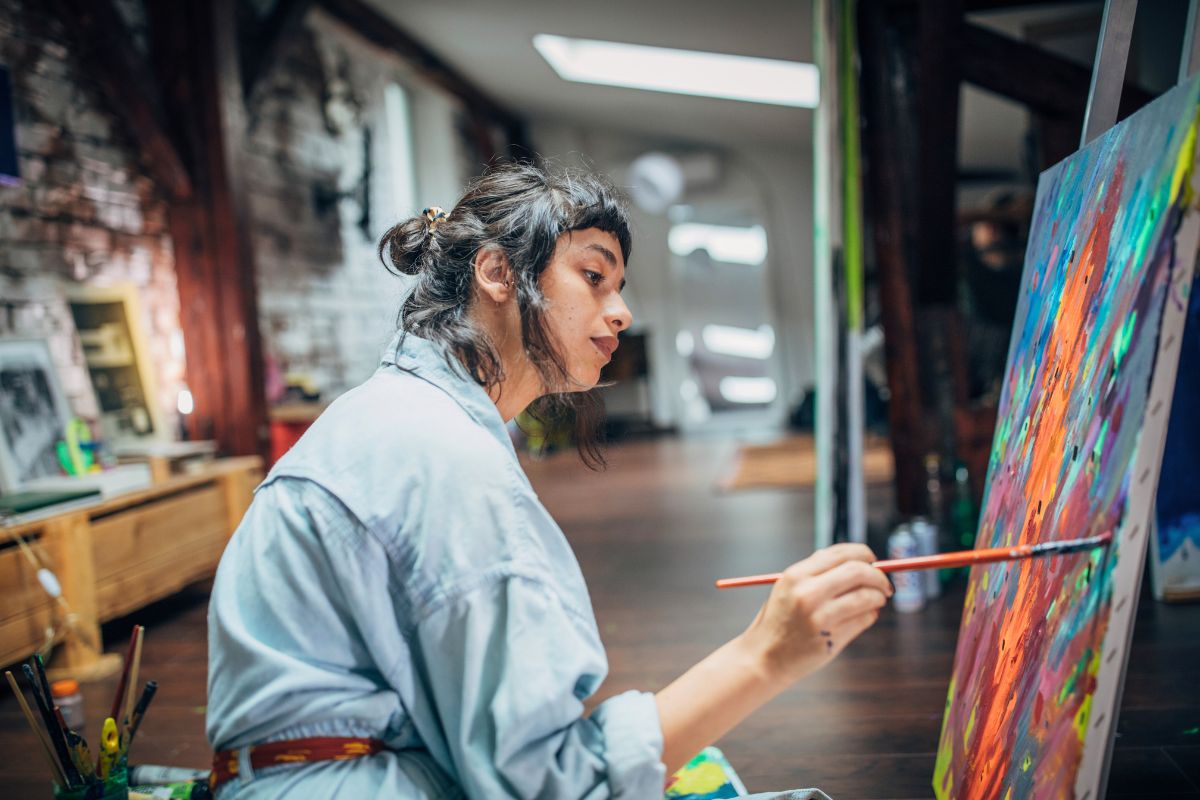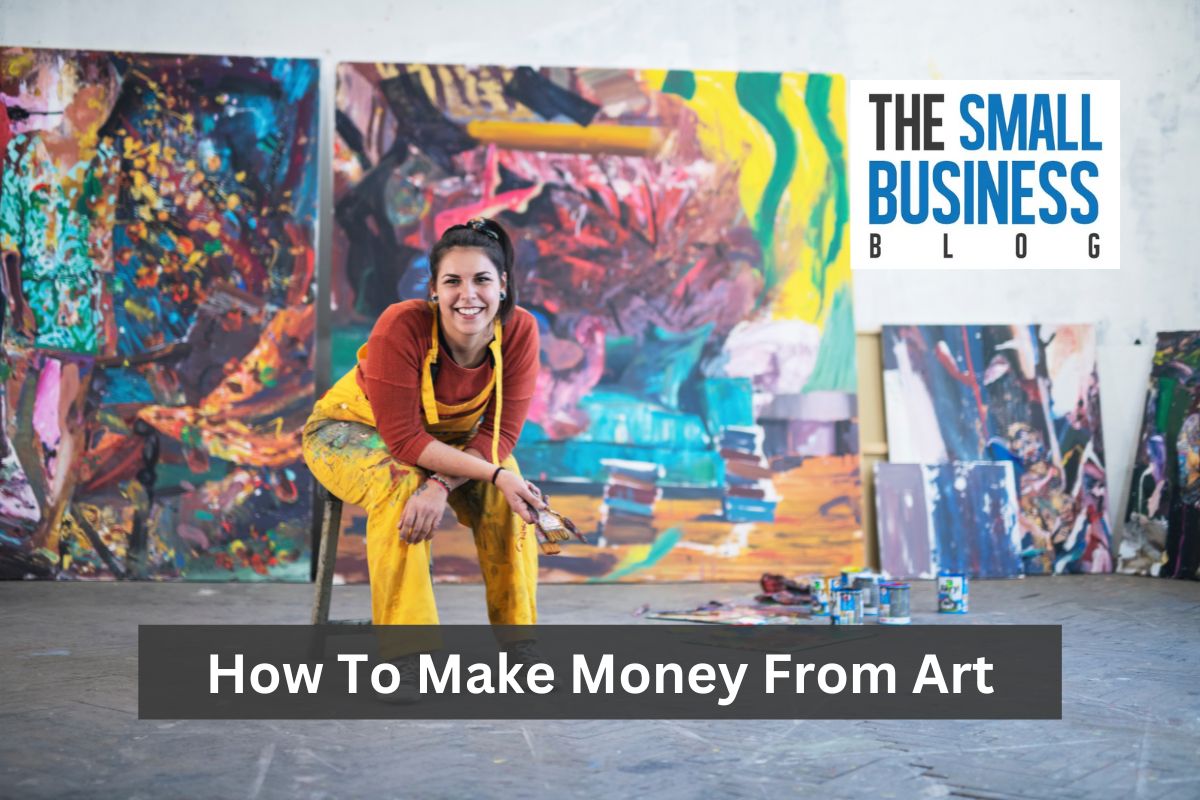Art has always been a medium of self-expression, but it can also be a lucrative venture.
If you’re passionate about art and looking to turn your creativity into a source of income, you’re in the right place.
In this quick guide, we’ll talk about how to make money from art, providing you with practical tips and insights to begin your artistic journey toward financial success.
Post Contents
How to Make Money From Art

Creating art is not just a hobby; it can be a profitable venture.
Here are some ways to unlock your artistic potential and start making money:
1. Selling Your Art
Selling your art is the quintessential method of turning your creative passion into a profitable venture.
Here’s a more in-depth look at how to make this method work for you:
Local Galleries
Consider approaching local galleries, which serve as a physical showcase for your art.
The key here is to establish a personal connection with the gallery owners.
Understand their niche and art preferences to determine the best fit for your work.
Art Fairs
Art fairs are bustling hubs of creativity and commerce, meaning participating in art fairs allows you to engage with art enthusiasts directly.
It’s a great chance to narrate the stories behind your creations, allowing potential buyers to connect emotionally with your work.
Online Platforms
The digital realm has opened up vast possibilities for artists.
Online platforms like Etsy have democratized the art market, allowing artists to connect with a global audience.
While setting up an online store is relatively straightforward, the real challenge lies in distinguishing your art from the competition, but we will talk about this in-depth later.
2. Art Commissions
Offering commissioned art pieces is a path that allows you to tailor your art to your client’s unique preferences and desires.
It’s a personalized and collaborative journey that provides you with financial rewards.
Here’s an expanded perspective on this avenue:
- Customization: The heart of art commissions lies in the power of customization. Clients seek your artistic expertise to bring their visions to life.
Whether it’s a portrait capturing a cherished memory, a mural transforming a living space, or a unique piece that mirrors a client’s personality, commissioned art thrives on the symbiotic relationship between artist and patron.
- Client Collaboration: Effective communication is key in art commissions. You must develop a deep understanding of your client’s expectations and ideas.
Listen keenly, ask questions, and be open to constructive feedback.
This collaborative spirit can lead to successful commissions, repeat business, and referrals.
3. Merchandising
The art of merchandising transforms your creations into tangible products, broadening your horizons as an artist and entrepreneur.
Merchandising your art allows you to diversify your income streams.
While your original art pieces are unique and might have a limited market, merchandise can reach a wider audience.
Transform your art into prints, apparel, phone cases, and more.
Each product becomes a canvas for creativity, expanding your reach and profit potential.
When creating merchandise, consider your target audience.
What products resonate with them? What elements of your art are likely to draw them in?
Take time to research and design your merchandise accordingly.
For example, if you specialize in wildlife art, think about creating eco-friendly products to attract environmentally-conscious buyers.
Use Online Art Marketplaces To Make Money From Your Art

In today’s digital age, online platforms have become a hotspot for artists to showcase and sell their work.
Here are some notable online art marketplaces:
Etsy
Etsy is a fantastic platform for artists, crafters, and vintage enthusiasts.
You can open your online store and sell your art to a global audience.
This global reach lets you connect with art enthusiasts from various corners, expanding your potential customer base.
Redbubble
Redbubble allows artists to upload their designs, which can be printed on various products like clothing, stickers, and home decor.
It takes your art to everyday items, allowing buyers to incorporate your creativity into their daily lives.
Society6
Society6 specializes in art prints and offers a wide range of products, making it easy to monetize your art.
The extensive range of products offers versatility, ensuring that your art can be appreciated in various forms, from wall art to home decor.
Using Social Media To Generate Revenue From Art

Social media can be a powerful tool to promote and sell your art.
Here’s how to effectively use social media for your art business:
Create a visually appealing Instagram profile to showcase your art.
Use relevant hashtags to reach a broader audience and engage with your followers.
Instagram’s visual-centric platform is a perfect match for artists, allowing you to narrate your artistic journey visually.
Pinterest is an excellent platform for visual artists.
Share your work, create boards, and connect with potential buyers.
It’s a place where people seeking inspiration can organically discover your art, making it a valuable space for artists.
Utilize Facebook to build a community of art enthusiasts.
You can join art-related groups and share your art there.
Building a community on Facebook allows you to foster a loyal following, connecting with those who share your passion for art.
Art Licensing, Classes, And Workshops Options

Art licensing involves permission for your art to be used on various products.
This passive income stream allows you to earn money while focusing on your creative process.
Licensing your art grants it a life of its own, as it finds its way onto various products, and you collect royalties, all while you continue to create new works of art.
Sharing your artistic knowledge through classes or workshops can be a creative and financially rewarding experience.
Teach others what you’re passionate about and earn money while doing it.
Hosting courses and seminars allows you to share your love for art and fosters a sense of community and learning among your students, creating a fulfilling experience for you and them.
Challenges artists Often Face
- Self-Doubt and Confidence – Many artists struggle with self-doubt and lack confidence in their work. Addressing this challenge by sharing tips for boosting confidence and overcoming creative blocks can be highly beneficial.
- Finding Your Niche – Discovering your unique artistic voice and niche can be challenging. Discuss strategies for identifying what makes your art distinctive and appealing to your target audience.
- Artistic Burnout – The creative process can be emotionally draining, leading to burnout. Offer advice on how to prevent and recover from burnout while maintaining a consistent output of quality work.
- Financial Stability – Artists often face economic instability, especially early in their careers. Share insights on budgeting, managing finances, and creating multiple income streams to achieve financial stability.
- Networking and Promotion: Building a solid network and effectively promoting your art can be challenging. Discuss strategies for networking with fellow artists, galleries, and potential buyers, as well as marketing and self-promotion tips.
- Pricing Art Fairly: Determining the right price for your art can be a delicate balance. Offer guidance on evaluating your work’s value and set prices that reflect your skill, effort, and market demand.
- Handling Rejection: Artists may encounter rejection when applying for exhibitions, grants, or collaborations. Provide advice on how to cope with rejection and use it as a stepping stone to growth.
Frequently Asked Questions
How can I get started with selling my art online?
To embark on your online art-selling journey, craft a captivating online portfolio.
Leverage platforms like Etsy or Redbubble to reach a broad audience.
Complement this with a robust social media presence to create awareness and engage potential buyers.
Is it essential to have formal art training to make money from art?
No, formal art training is not a prerequisite for financial success in the art world.
Many accomplished artists are self-taught, their dedication and passion serving as the driving force behind their success.
How do I set the right price for my art?
Determining the appropriate price for your art involves considering several factors.
Calculate the cost of materials, account for the time invested in the piece, and consider your reputation as an artist.
Pricing should reflect the unique value of your work.
What are some effective marketing strategies for artists?
Effectively marketing your art requires engaging with your audience on social media platforms.
Participation in art events and collaborations with fellow artists can significantly expand your reach, ensuring your work gains the recognition it deserves.
What should I do if I’m struggling to sell my art?
If you face challenges in selling your art, you have to reassess your marketing strategies.
Seek feedback from fellow artists and consider adjusting your pricing to make your art more accessible to potential buyers.
Conclusion
The path of turning art into money is exciting and full of chances for financial gain and creative expression.
The options are endless: you can sell your artwork online, take special orders, investigate popular online markets, or impart your skills through seminars and workshops.
If you’re open to an artistic journey with self-confidence, you can turn your love of art into a successful and satisfying job.
So, now that you know how to make money from art, get started on your path to financial success with these diverse approaches.






























